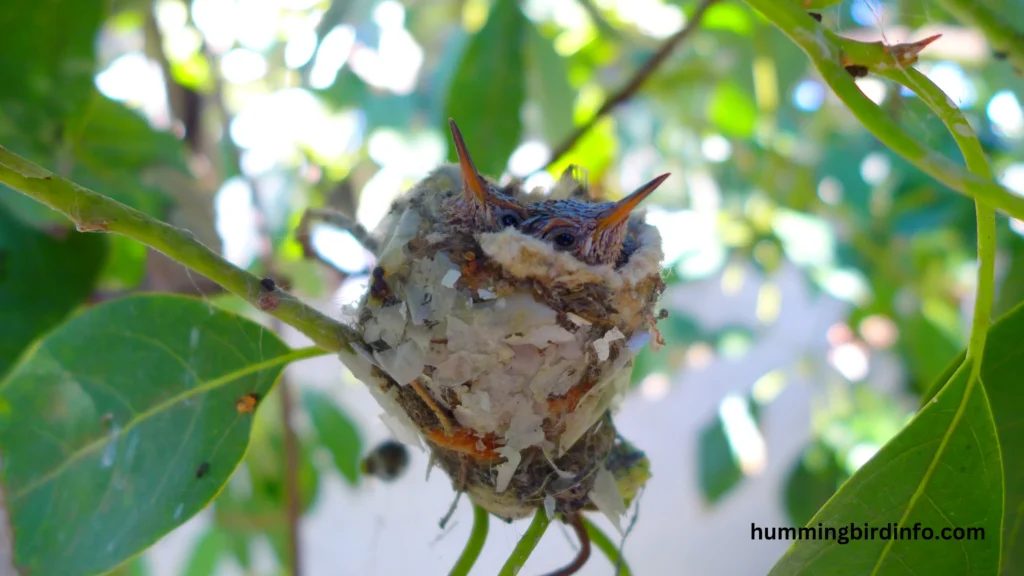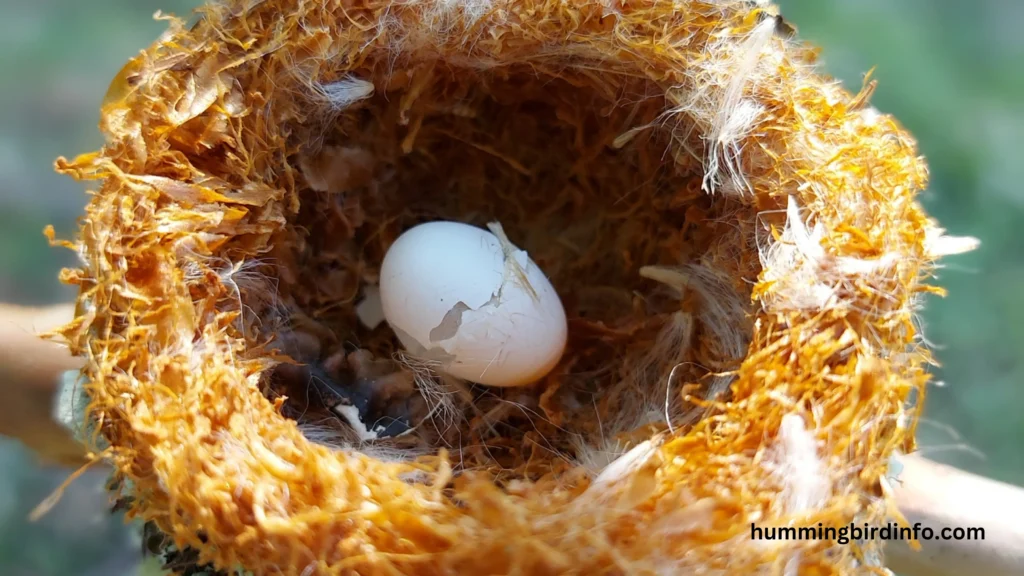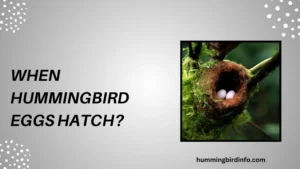A tiny hummingbird meticulously weaves a delicate nest, each thread holding the promise of new life. This fragile home, often no larger than a walnut, soon will cradle tiny eggs, the future generation of these mesmerizing birds.
The process of egg-laying is one of nature’s quiet marvels—both vulnerable and powerful in its significance.
Understanding when hummingbirds lay their eggs is not just a matter of curiosity. It reveals the delicate timing and survival strategies these birds rely on. From the moment a female chooses her nest site to the hatching of her young, every step is orchestrated by nature to maximize success.
This timing varies across species and habitats, shaped by complex environmental and biological factors.
For bird watchers, conservationists, and nature lovers alike, knowing the egg-laying calendar helps us better appreciate these creatures and supports efforts to protect their fragile populations.
This article explores the egg-laying schedules of various hummingbird species, the factors influencing their timing, and how you can contribute to their thriving in your own backyard.
Contents
- 1 The Egg-Laying Calendar: A Species-by-Species Overview
- 2 The Orchestration of Reproduction: Factors Influencing Timing
- 3 The Nesting Process: A Prelude to Eggs
- 4 Implications for Backyard Birders and Conservation
- 5 Conclusion
- 6 FAQs
- 7 1. When do hummingbirds usually start laying eggs?
- 8 2. How many eggs does a hummingbird lay at a time?
- 9 3. Do hummingbirds have more than one brood per season?
- 10 4. How long is the incubation period for hummingbird eggs?
- 11 5. Who builds the hummingbird nest?
- 12 6. What factors influence when hummingbirds lay eggs?
The Egg-Laying Calendar: A Species-by-Species Overview
Ruby-throated Hummingbird (Archilochus colubris) marks the start of spring for many in the East. Typically, they lay eggs between late April and June, with timing dependent on latitude. Usually, they have one brood per season, but in warmer southern areas, sometimes two.
Their arrival after migration and the abundance of nectar and insects are critical for laying healthy eggs. The female builds a tiny cup nest alone, laying two white eggs that incubate for about 12-14 days.
The Rufous Hummingbird (Selasphorus rufus), known for its long western migration, lays eggs from April to July, varying by latitude. Arrival timing is vital as they depend heavily on seasonal nectar blooms to fuel reproduction.
Their nests are similarly constructed by the female, clutching two eggs with an incubation period of about 14-16 days.

Along the California coast, the Allen’s Hummingbird (Selasphorus sasin) starts egg-laying as early as February or March. Their mild coastal climate allows up to two broods per season. These birds rely on the early blooming native plants for nectar. The female’s nest is carefully woven, and incubation lasts about 15-17 days.
The tiny Calliope Hummingbird (Selasphorus calliope), nesting in high-altitude areas, lays eggs mostly in late May and June. Timing hinges on snowmelt and flower availability, essential for feeding their young.
Nests are often tucked among conifers, with incubation taking 16-18 days for the typical two-egg clutch.
In the Southwest, the adaptable Black-chinned Hummingbird (Archilochus alexandri) lays eggs between April and June. Depending on location, they may have one or two broods. Their nests are often built near water sources, and incubation lasts 12-14 days.
They thrive in diverse habitats, making them one of the most widespread breeders.
The desert specialist, Costa’s Hummingbird (Calypte costae), lays eggs early, usually in February or March, syncing breeding with desert wildflower blooms. Typically producing one or two broods, their nests are tiny and fragile, with incubation lasting 16-18 days.
Other North American hummingbird species follow similar seasonal patterns, with variations depending on climate, habitat, and food availability, underscoring the diversity in their reproductive timing.
The Orchestration of Reproduction: Factors Influencing Timing
The timing of egg-laying hinges heavily on the hummingbird’s arrival after migration. Birds need time to establish territories and mates, which directly affects when eggs can be laid.
This arrival is often timed to the blooming of flowers and insect availability, ensuring adequate food resources for the energetic demands of egg production and chick-rearing.
Environmental cues like photoperiod (day length) and rising temperatures play crucial roles, triggering hormonal changes that signal the onset of reproduction.
Alongside these external factors, female condition—including health and age—also affects when and how successfully she can lay eggs.
Latitude and altitude influence timing significantly. Birds nesting at higher elevations or northern latitudes often lay eggs later because snowmelt and flower blooms happen later there.
Meanwhile, predator avoidance may shape when nests are started to minimize risk, though this is less studied.
Lastly, mate availability and courtship success are key. Since female hummingbirds typically raise young alone, they must secure a safe nesting site quickly after mating to ensure the best chance for their offspring.
The Nesting Process: A Prelude to Eggs
Choosing the perfect nest site is an essential step. Females pick locations that provide shelter from weather and predators, often in trees or shrubs near abundant nectar sources. The site must be safe yet close to food, balancing protection with convenience.
The nest itself is a masterpiece of natural engineering. Made from plant down, spider silk, and lichen, it’s small yet stretchy enough to grow as the chicks develop. The female builds this entirely on her own, using her body to shape the cup-like structure with incredible precision.
Once the nest is complete, egg-laying usually begins quickly. Most species lay a clutch of two tiny, white eggs. The number of broods varies—species in warmer climates often raise two broods per season, while those in harsher environments may only have one, maximizing the chances for offspring survival in a limited time frame.
Implications for Backyard Birders and Conservation
Understanding when hummingbirds lay eggs is vital for bird enthusiasts and conservationists. Keeping feeders clean and stocked well before hummingbirds arrive in spring provides critical energy for establishing territories and beginning breeding.
Planting native trees and shrubs that offer nesting materials and safe sites supports their reproductive needs. Equally important is minimizing disturbance near nests, as stress can jeopardize egg and chick survival.

Knowledge of breeding timing helps inform conservation strategies, ensuring habitats remain hospitable during these critical periods. This awareness also deepens appreciation for the delicate balance these tiny birds maintain to bring new life into the world.
Conclusion
The timing of hummingbird egg-laying is a finely tuned dance, shaped by migration, food availability, climate, and biology. Different species follow their own unique calendars, each adapted to their specific environment and challenges.
Understanding these patterns reveals the crucial link between the environment’s health and hummingbird reproduction. For backyard birders and conservationists, this knowledge guides how to best support these iridescent jewels of the sky.
Next time you see a hummingbird nest, remember the incredible effort and precise timing behind each tiny egg—a testament to nature’s resilience and wonder, ensuring that new life will continue to grace our world.
FAQs
1. When do hummingbirds usually start laying eggs?
Hummingbirds typically begin laying eggs from February to June, depending on species, latitude, and local climate.
2. How many eggs does a hummingbird lay at a time?
Most species lay a clutch of two tiny white eggs per brood.
3. Do hummingbirds have more than one brood per season?
Some species, especially in warmer climates, may have one or two broods per season.
4. How long is the incubation period for hummingbird eggs?
Incubation generally lasts between 12 to 18 days, depending on species.
5. Who builds the hummingbird nest?
Only the female hummingbird builds the nest, using materials like plant down and spider silk.
6. What factors influence when hummingbirds lay eggs?
Timing depends on migration arrival, food availability, day length, temperature, and female condition.








